I didn’t think there would be anything more nerve-wracking than having Monty Don coming around to see our garden expecting it to look finished. But then, I hadn’t reckoned on opening our garden on the National Open Garden Scheme (NGS).
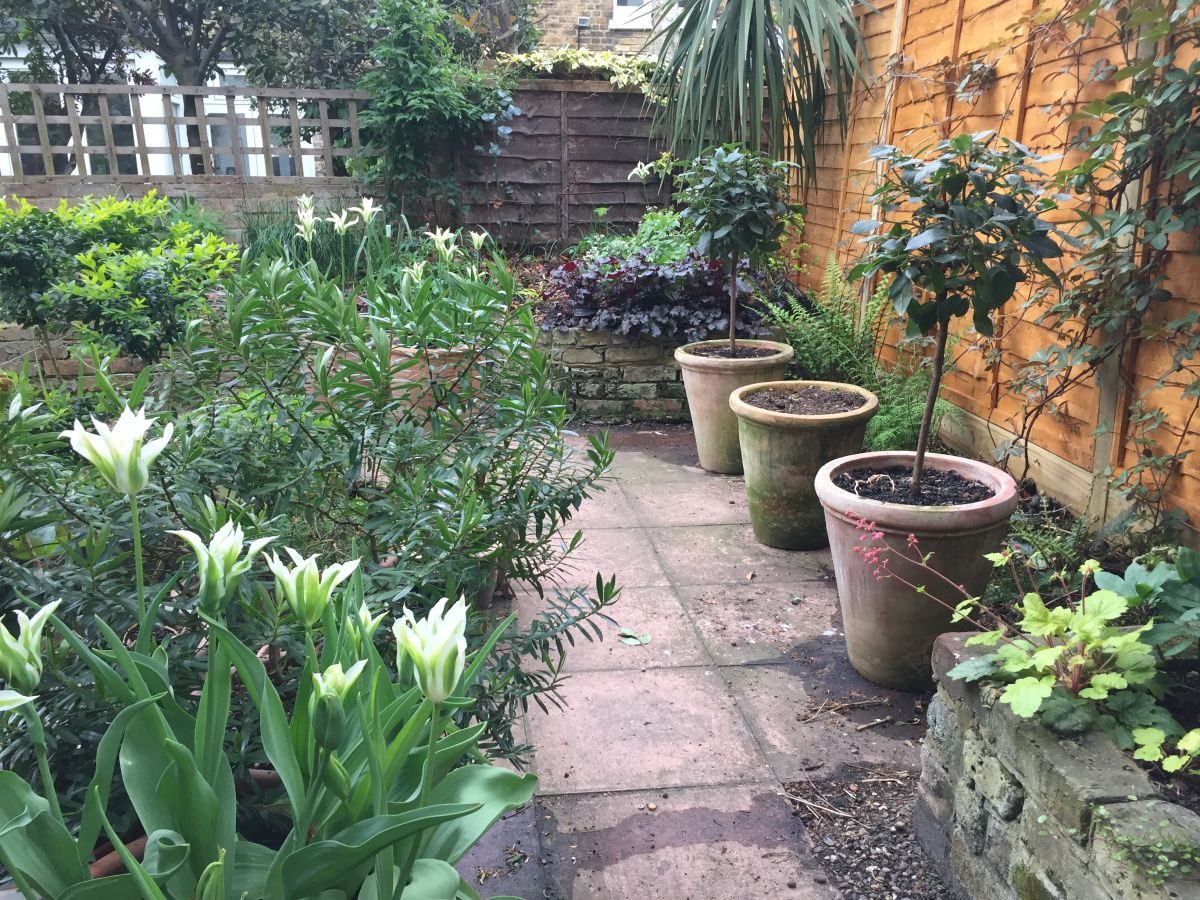
When the film crew were in it was all too easy to ask them to kindly turn away from the floor-less, wall-less, everything-less kitchen. To not show our tatty, unpainted sash windows. With the paying public however, I’ve been hit with the reality that nothing will go unseen, nothing can be hidden by “the magic of television” (not that it really was because a gardening show is never going to care about the inside!)
So, I am worried about little things like “will the climber cover the overly orange new bit of fence in time?” and “is everything going to still flower in July given the weather is about a month earlier than usual?” However, I’d be worrying about these things regardless, so better to just go with the flow (I won’t go with the flow, I’ll worry, but it’s better to tell myself this).
At this time of year in the garden, there are winners and losers. Some plants made it through winter, others didn’t. Most gardeners I know feel the pinch of a loss greatly – usually because we’re all control freaks and hate things not going to plan.
My biggest pain points come when something is going so well and then… well, suddenly it isn’t. This weekend I discovered the Hellebore with blackspot still had it with a vengeance and it had spread to another of my formerly unscathed Hellebores. It’s a lesson in knowing where you’re buying from – in this case a really well known London nursery I’d find it hard to buy from again.
Dahlias. Ah Dahlias. Last year everything went so well with you didn’t it. This year, Dahlias, some of you decided to just not bother. Yes, I have lost quite a few Dahlias this year (hashtag sad face). Most Dahlias I left in the ground. At home, perfectly fine, they’re all now shooting. Down the allotment, I look to have lost half of them.
Lifting them wouldn’t have helped because my stored Dahlias are where I suffered the most losses. An emergency last minute order with Halls of Heddon for a new Hillcrest Royal and Moor Place was the ticket. That said, in the moment of throwing my beloved rotting Hillcrest Royal into the bin bag, I noticed one tiny little root. Dahlias are tough things, so back it came with a handful of compost and a lot of hope.

Echinacea too are proving to be a pain. Echinacea is the one plant I seem to kill more of than I feel comfortable with – although a barrage of tweets from fellow horticulturalists suggest I am far from alone. Echinacea are finicky little badgers. My first one, Fatal Attraction, I adored – it started dying of root rot last spring, so I chucked it.
Not to be deterred I bought three more. One lost and rotted, the other two won and are looking very healthy this spring. Excited by this I’ve ordered a few bare roots for my allotment. They all rotted. I ordered a replacement – they’ve rotted despite no water at all. The lesson? Don’t buy bare root Echinacea, and when you have a plant, make sure it has mega efficient drainage.
Luckily, there are more plants in the winners camp than the losers.
I’m particularly excited about the Acanthus spinosus, now in its third year. It looks incredibly health and has no less than five – count em, five! – flower spikes emerging. I absolutely love this plant, so this is very exciting indeed. [NB: if anyone ever cultivates a version with neon pink petals instead of white, wherever you are – I am there!]
When Rumbles is asleep inside, our little inner city nature reserve is back in full flow. We always seem to have the same birds returning each year like clockwork – a robin, a pair of great tits, a pair of black birds and a pair of wood pigeons. Every year since we’ve been here. I don’t know birds well enough, whether it’s just pot luck, off spring or the same birds. Lovely none-the-less.
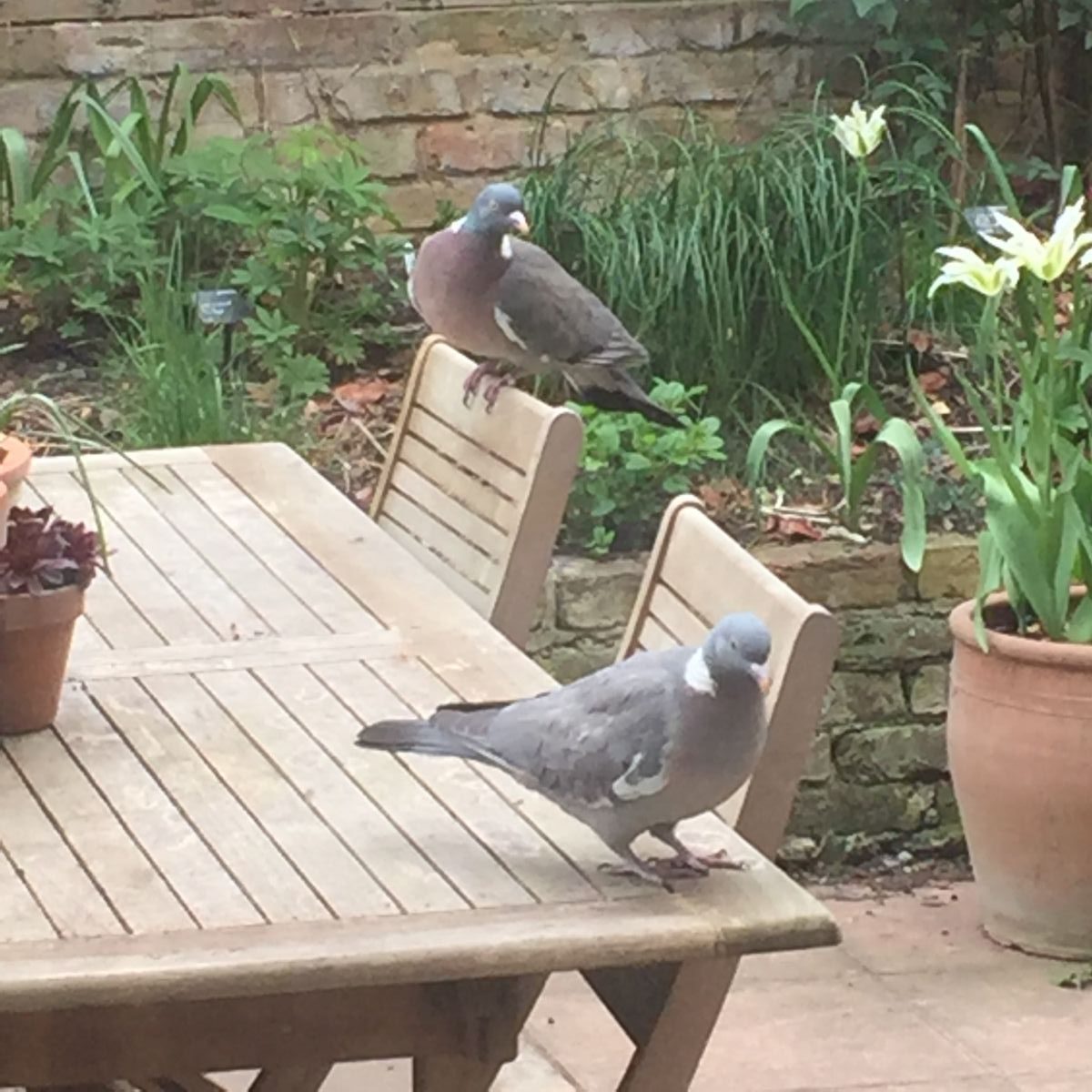
Most of the plants in our garden are in pots. Now that we’re into year two since our revamp, some of the bigger problems of a pot garden are coming to light. Firstly, the compost in the big pots (half of which I recycled last year) is well and truly spent. Where to put a few hundred litres of compost in London without a car, when the council won’t take it and you have no space for it, is a challenge I haven’t yet worked out how to overcome.
Many plants have also outgrown their pots, some have to be potted on, others like the below Persicaria, can be divided to be made smaller. It seems brutal but the other half just gets thrown away.
I’ve just this moment finished performing an emergency repotting of one of my cacti as the roots were rife with that common yellow mould cacti are prone to getting. As a child my dad showed me how to remove all the compost and cover with yellow sulphur to save it – which I’ve just done. With a bit of luck and a couple of weeks of no water, hopefully that will be saved from becoming a loser.
Back in the winners’ corner, our Buddleia is growing stronger than ever and the Echiums are looking to flower. Our four year old hostas, in the same pots, are shooting. This short lived moment of purple and green is as good as any flower and a reminder of the speed and perfect freshness seen only in early spring.
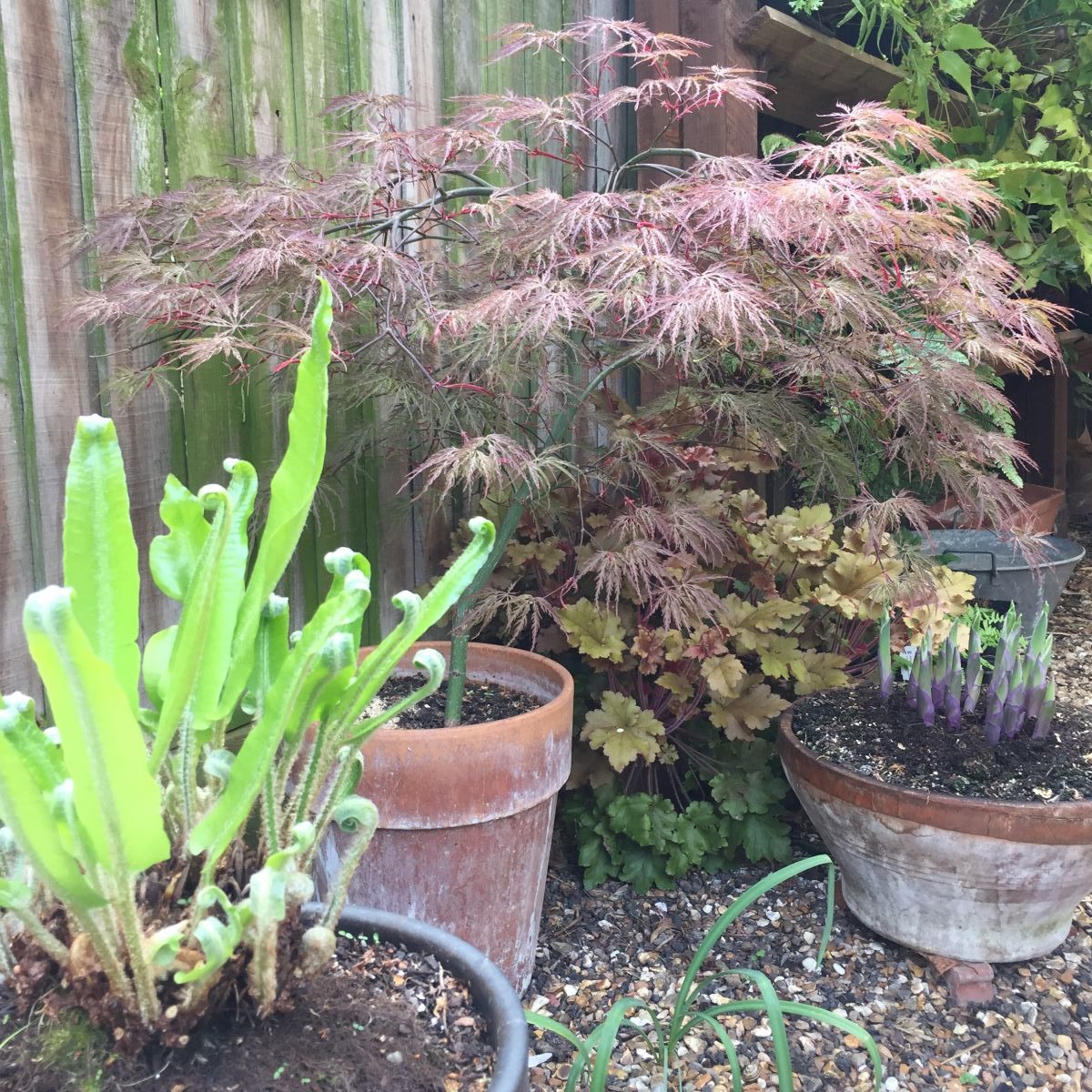
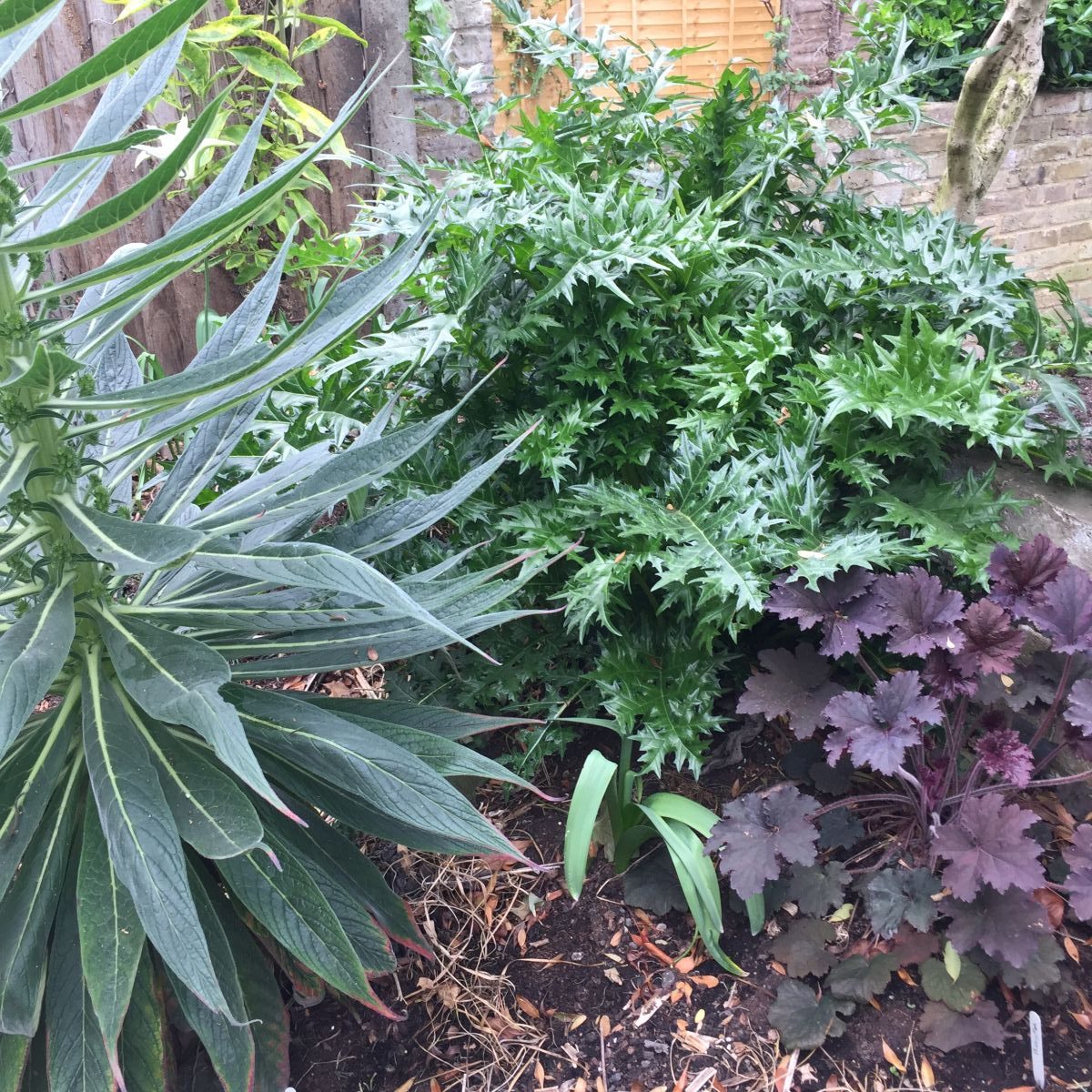
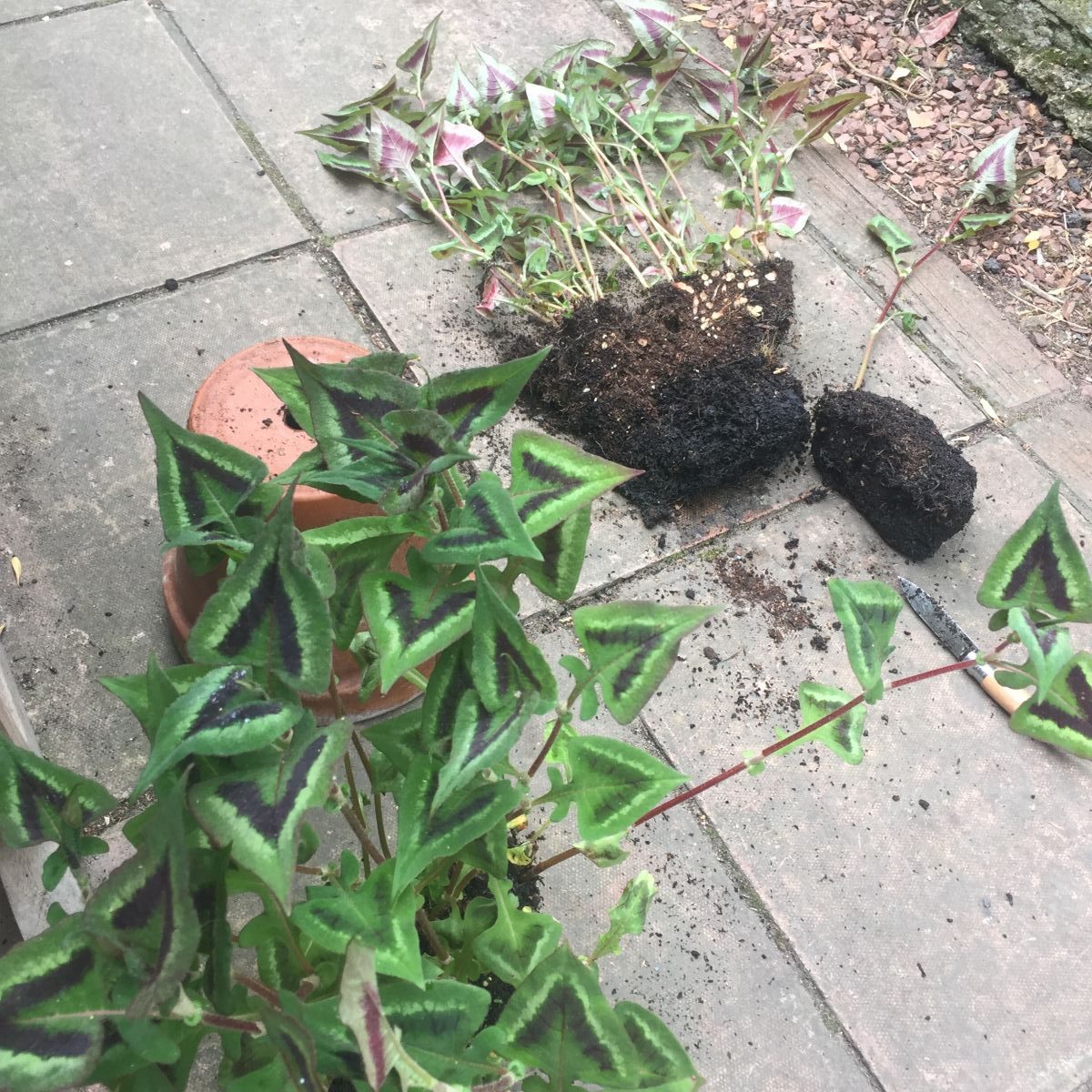
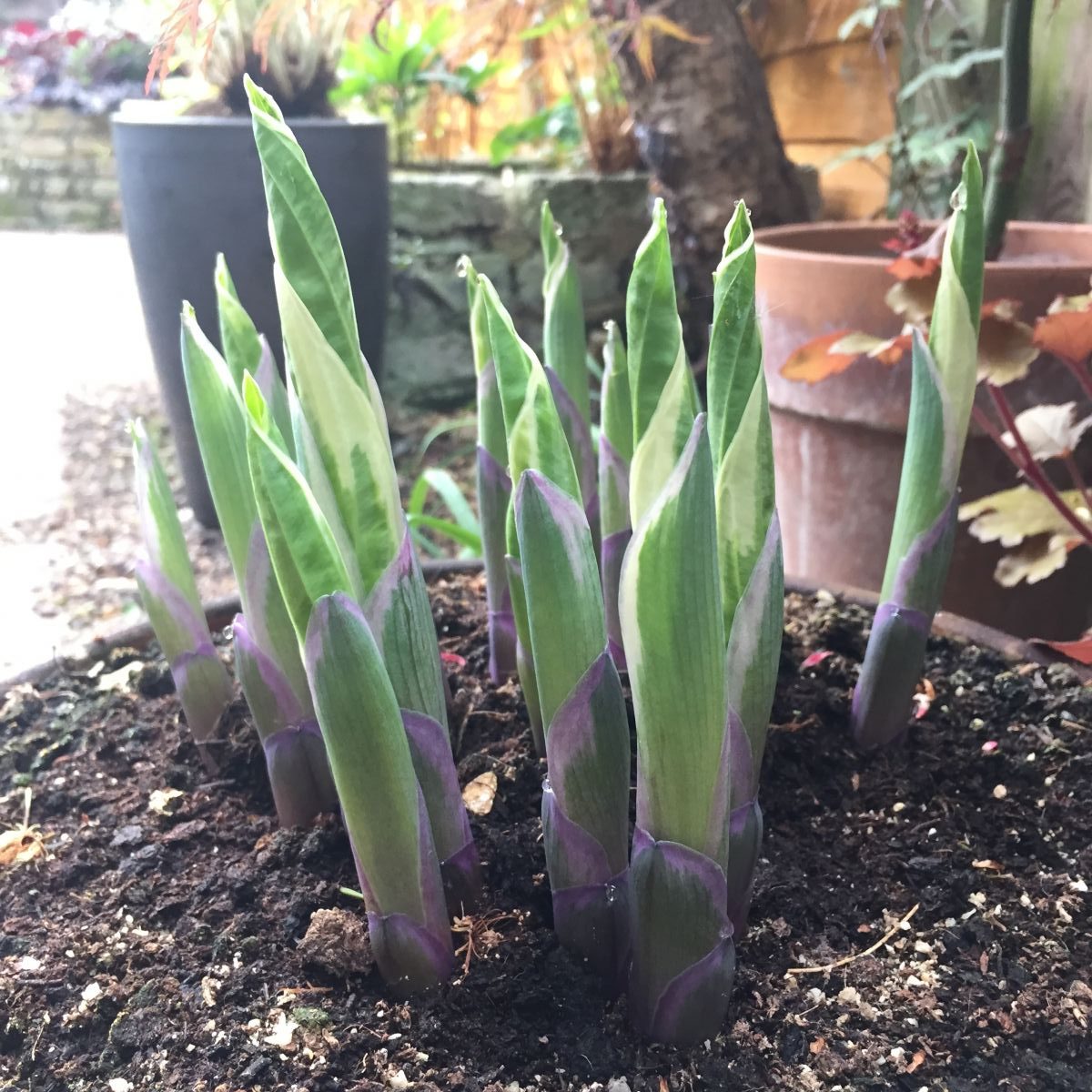

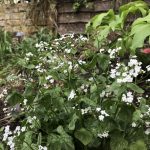
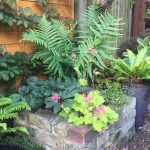

I love this post – it made me laugh, and I so ‘get’ your nervousness that accompanies an ngs open day – especially the first one! And then…arrgghhh save a bit of persicaria for me!!! Or I might have to raid your bins 🤣
Don’t worry…it’ll all go swimmingly and you can always paint your fence black to offset your plants…works well, trust me! Xx
Thanks! I flip from being excited to ‘argh’ weekly. I’m sure it’ll be fine you’re right. I’ve already binned the Persicaria but it grows so quickly I can cut you off a bit if you like.
Fence wise, it was a race against the vine growing and now it’s back on I’m not sure how I’ll paint beneath it. I’m sure it’ll be ok once everything grows more to cover most of it up.
Seriously, those echinacea! Of three I’ve just managed to rot one and half rot another. Fortunately the last one is going great guns (for now!). I didn’t realise until recently how averse they are to wet ground. You’ve continued to have problems with subsequent batches?
The only ones I’ve had real problems with are the bare root plants. They shoot a bit and then die. I think if you start with a strong plant it stays that way. I’m going to keep trying though, I want to understand what’s happening and how to stop them rotting. I have three bare roots that were sent out to me as replacements in pots now. I haven’t watered them at all this time, just put them in fairly dry compost. I’m. It going to water until they wilt!
I’m glad it’s not just me and the echinacea. I bought three cheap bare roots on a bit of a whim and they all did nothing at all, so I kept watering them because I thought they’d dried out! Whoops. I’m trying from seed now. Will remember the drainage tip when (if!) they go out into the border.
Good luck with the seed grown ones, I think the pink / purple ones and species flowers are the sturdier if everyone’s comments and my experience are anything to by. It’s the exciting cultivars that are trouble makers.
I have a couple of echinacea purpurea, bought as bare roots. One planted into heavy clay soil is my most reliant plant – one flower the first year then more and more each year. It’s next to a low wall, crowded out by other plants and yet up it comes, every year. Sorry, don’t mean to flaunt this (!) just showing how contrary they can be. Another that does well is on very poor soil (my drought border) – neither of these plants get overwatered as I don’t have a nearby tap so they get watered about once a month! It’s always a good idea to look at the geographic origins of a plant to understand their needs. I’ve also read that the hybrid plants are far more unreliable than the bog standard one.
Could you offer a few of your excess plants as a mini plant sale when you open to the public? Might pay for a few more echinacea!
Thanks Caro! You give us all hope 🙂 I think I’m going to stick with the species in future as these do seem to be the most reliable as you say, the cultivars are the ones people seem to have trouble with.
If I can I will try to offer some of the excess plants for sale on the day. It’s tricky because our garden really is tiny so there is not much space for extras 😀